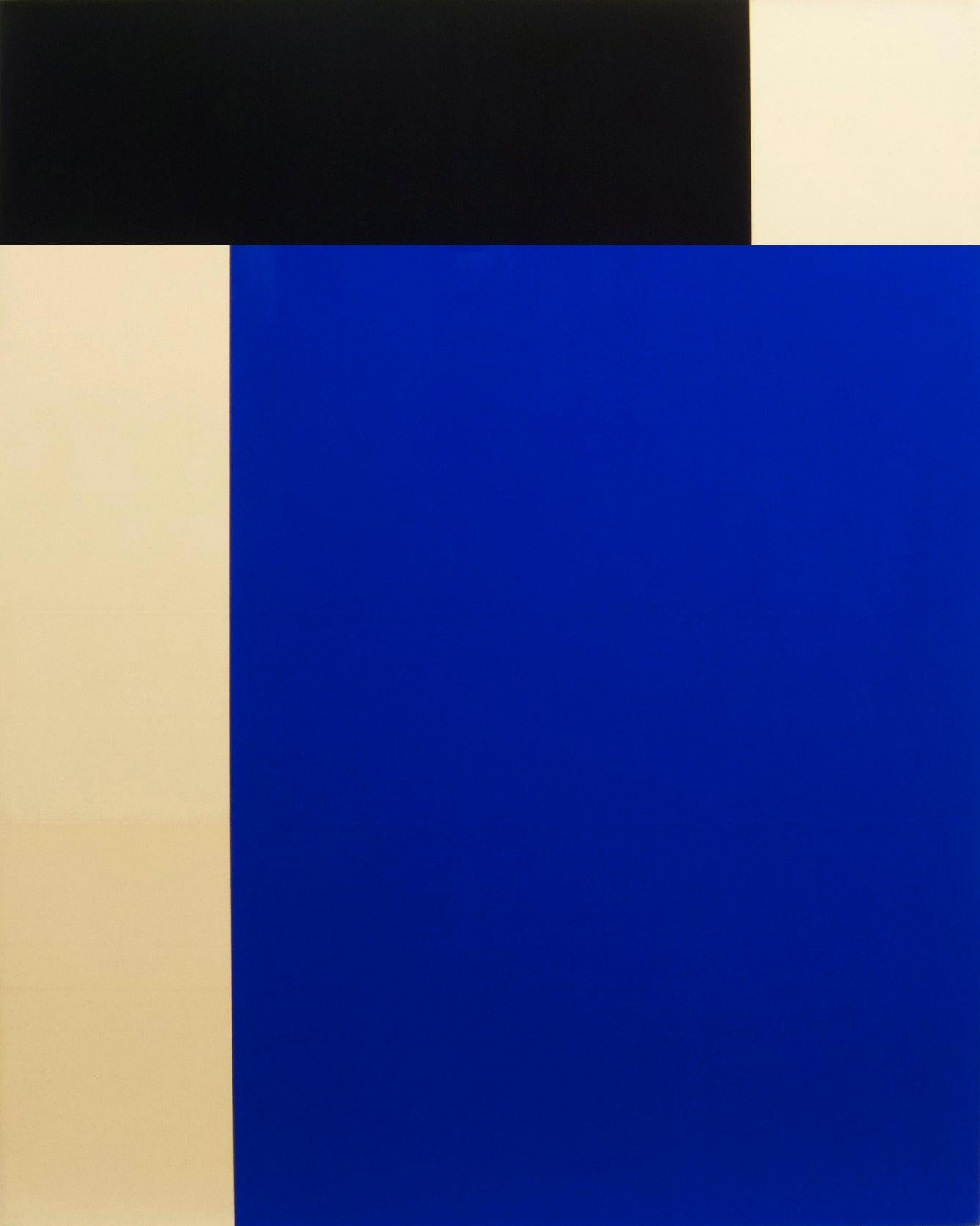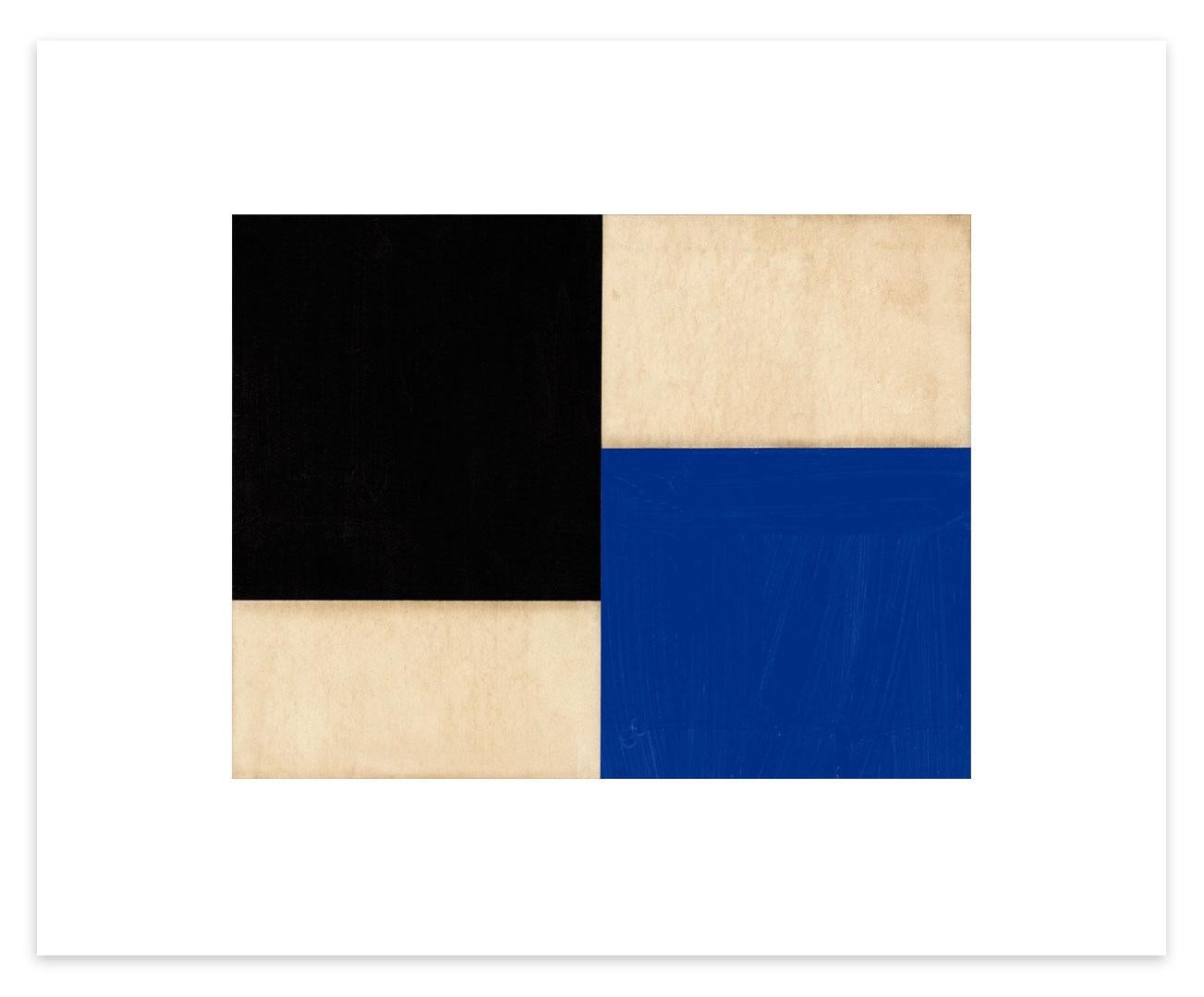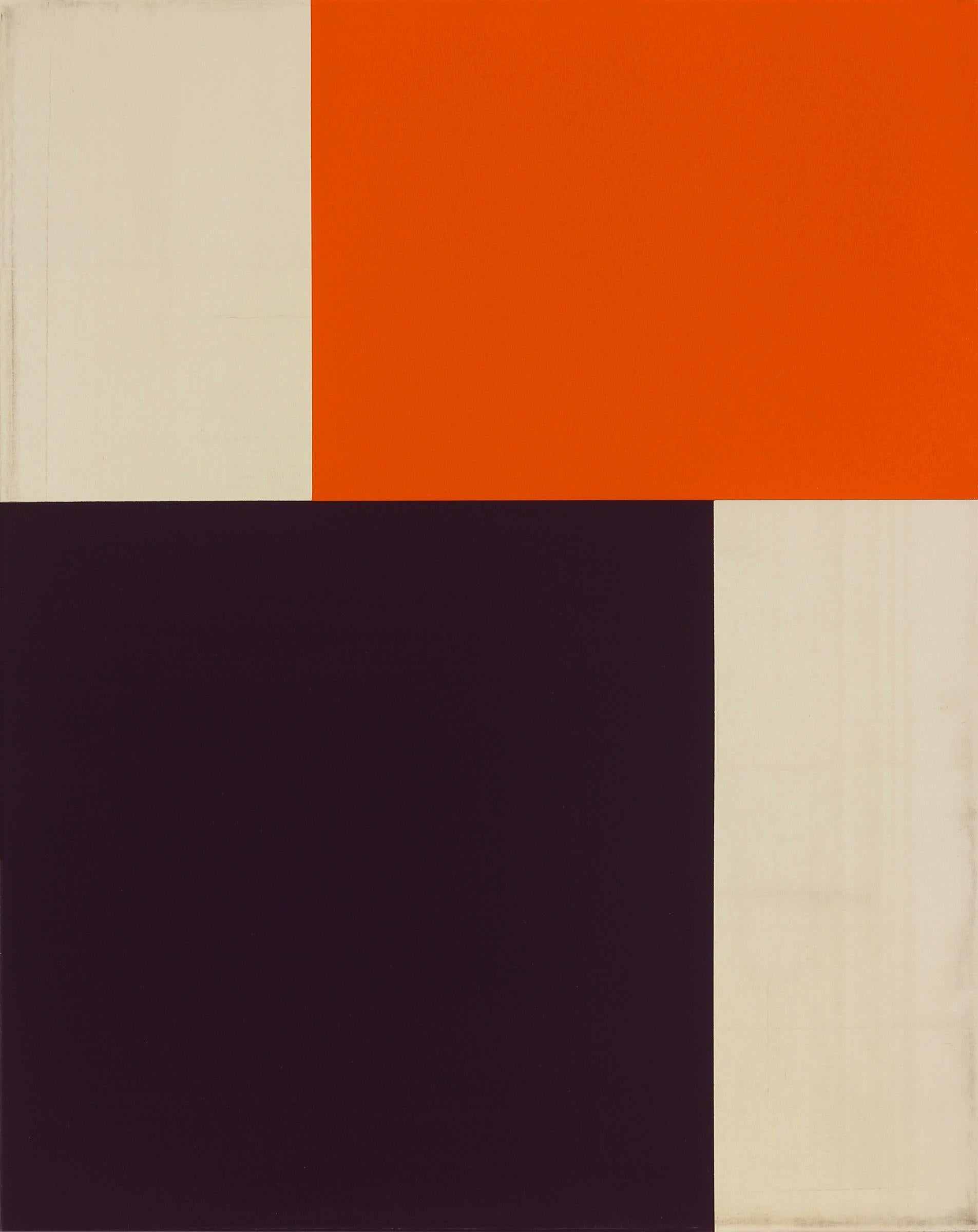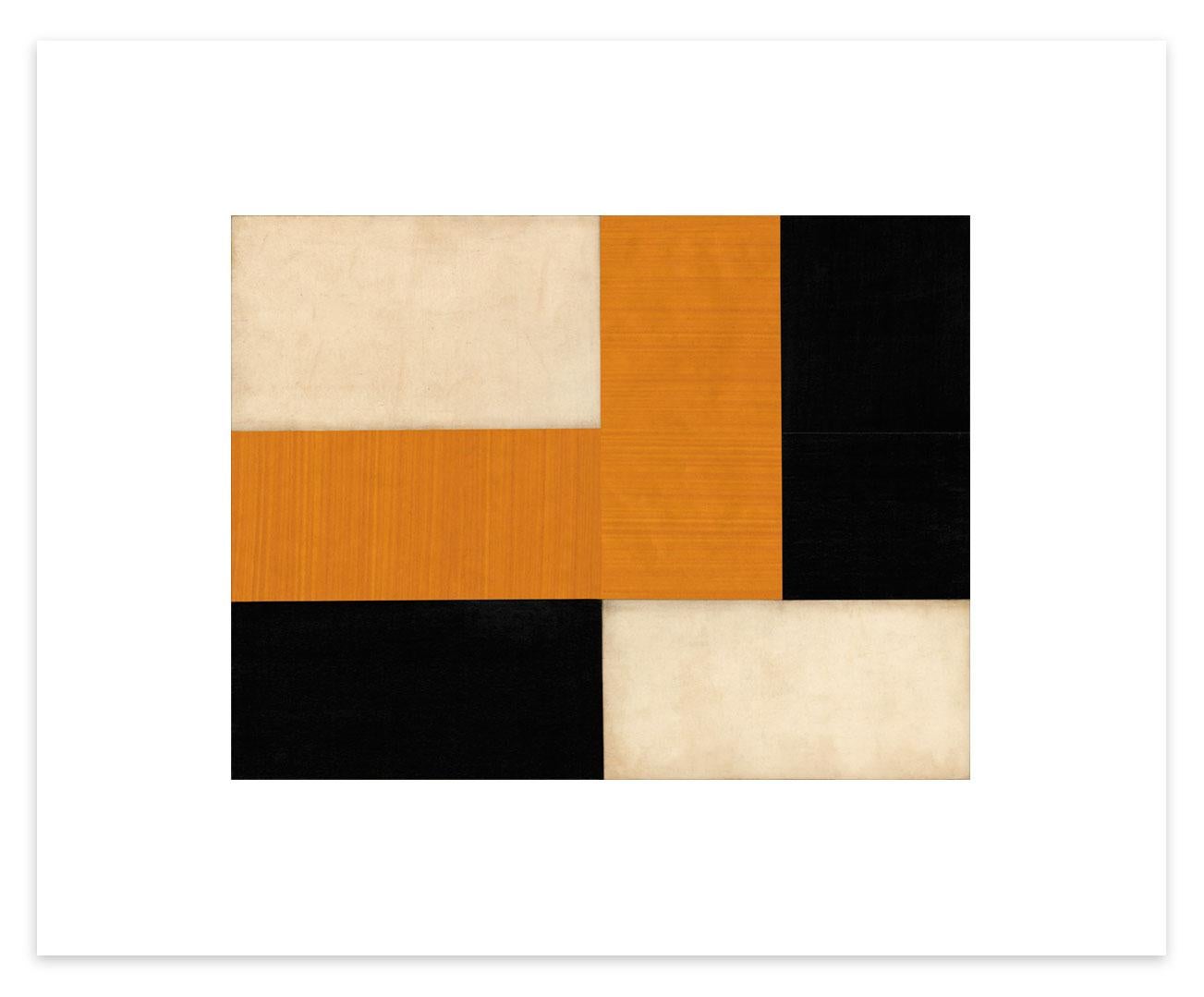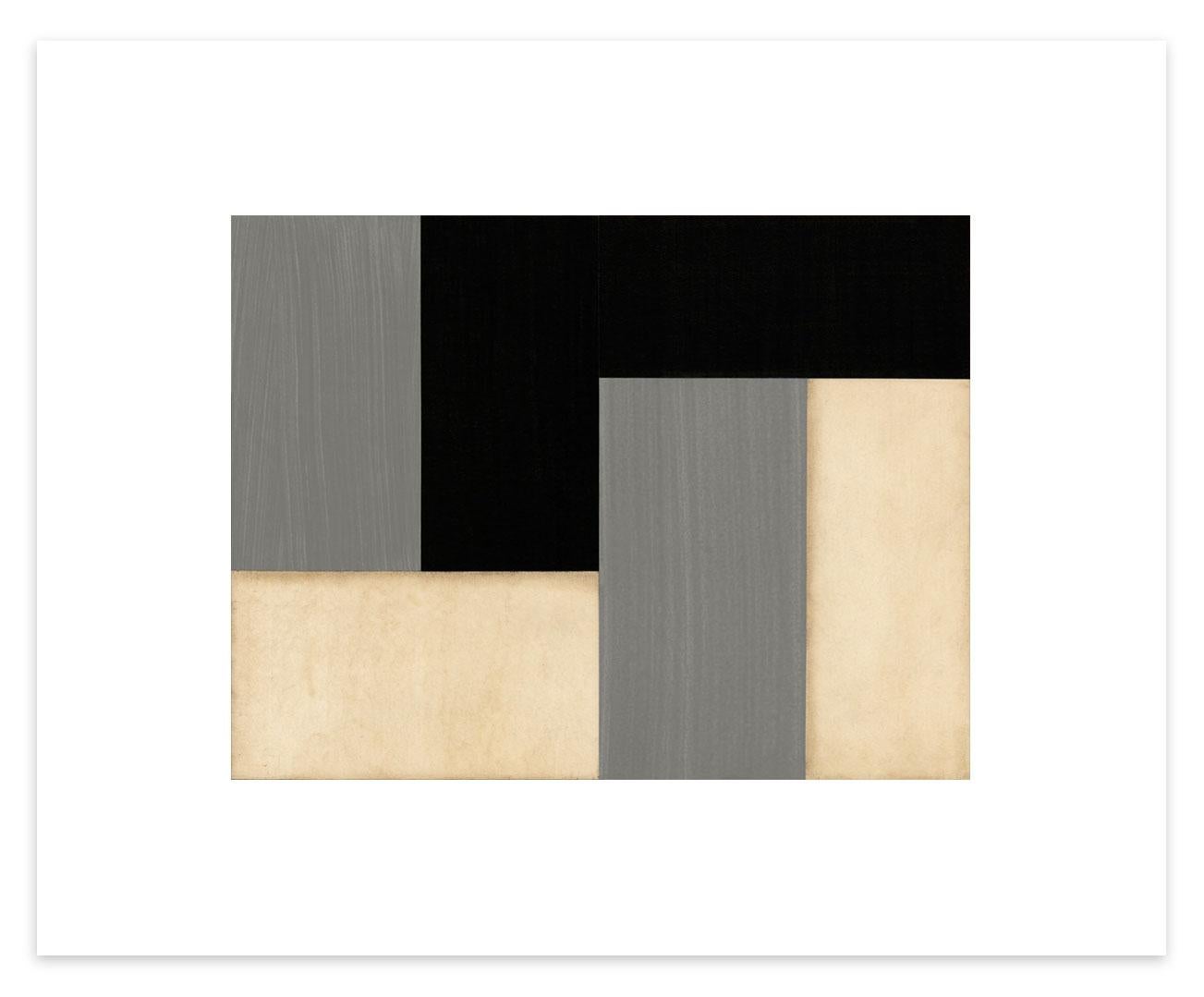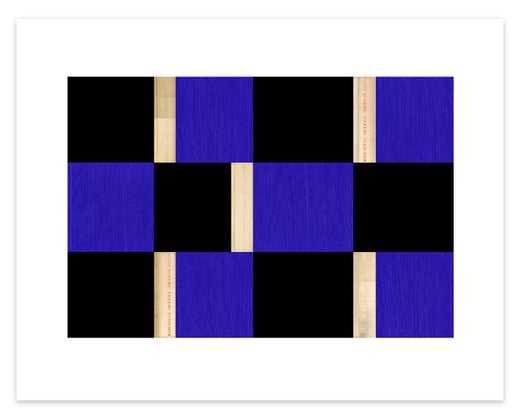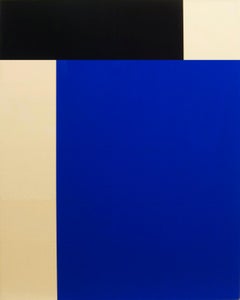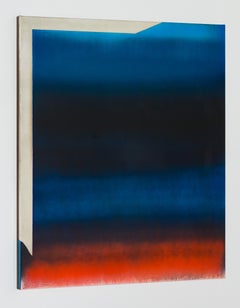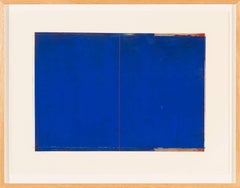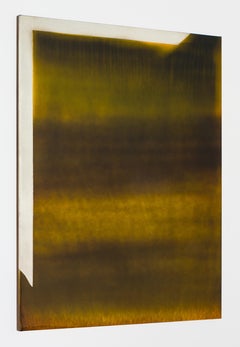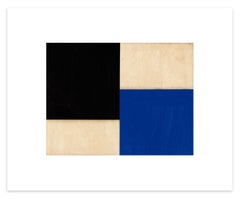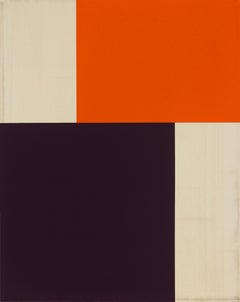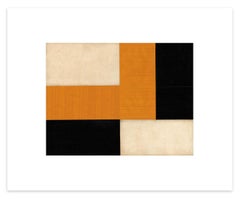Want more images or videos?
Request additional images or videos from the seller
1 of 5
Robert KellyStrindberg Nocturnes I2019
2019
$25,000
£19,206.57
€22,068.13
CA$35,165.60
A$39,506.97
CHF 20,642.45
MX$482,201.07
NOK 262,098.87
SEK 246,710.87
DKK 164,680.63
About the Item
Robert Kelly’s painted collages are anchored in a step-by-step process of formal puzzle composition and informed by decades of expert surface crafting. Having grown fond of the pared-down tools of line, form, and color, he juxtaposes these elements with items gathered during extensive travels. Antique botanical drawings, handwritten notes, small sketches, and vintage signs come together as the ground for his works. Through meditative layering and edge-to-edge arrangements, his sensual surfaces, full of tension and exquisite junctions, expose histories of tactile decisions.
Robert W. Kelly was born in Santa Fe, New Mexico and graduated from Harvard University, Cambridge with an MA in 1978. Throughout his career, he has received positive reviews in many prestigious publications including Art in America, ARTnews and the Los Angeles Times. He is represented in both private and public collections including the Dallas Museum of Fine Art, IBM, New York and the Museum of Fine Art, Santa Fe. Although frequently returning to the Southwest, Kelly resides in New York City.
- Creator:Robert Kelly (1956, American)
- Creation Year:2019
- Dimensions:Height: 30 in (76.2 cm)Width: 24 in (60.96 cm)Depth: 1.75 in (4.45 cm)
- Medium:
- Movement & Style:
- Period:
- Condition:
- Gallery Location:Phoenix, AZ
- Reference Number:1stDibs: LU13713085492
Robert Kelly
Drawing on his extensive travels, Robert Kelly’s painted collages contain found print and material from around the world. Kelly has included antique botanical drawings, handwritten notes, small sketches, vintage posters, and signs in his work. To create the ground for his paintings, he lays the re-appropriated paper in long strips to form irregular grids, small squares, and triangles. The repeated application often obscures the printed content beyond recognition. His play of edges, angles, and cuts creates a tension and an intuitive logic to the placement of line and form. These explorations, communicated through a skilled technique, refined over a 20-year career, achieve a mature balance that is both formally rigorous and visually exciting. Robert W. Kelly was born in Santa Fe, New Mexico and graduated from Harvard University, Cambridge with a MA in 1978. Throughout his career he has received positive reviews in many prestigious publications including Art in America, ARTnews and the Los Angeles Times. He is represented in both private and public collections including the Dallas Museum of Fine Art, IBM, New York and the Museum of Fine Art, Santa Fe. Although frequently returning to the Southwest, Kelly resides in New York City.
About the Seller
5.0
Vetted Professional Seller
Every seller passes strict standards for authenticity and reliability
Established in 1984
1stDibs seller since 2012
67 sales on 1stDibs
Typical response time: 17 hours
- ShippingRetrieving quote...Shipping from: Phoenix, AZ
- Return Policy
Authenticity Guarantee
In the unlikely event there’s an issue with an item’s authenticity, contact us within 1 year for a full refund. DetailsMoney-Back Guarantee
If your item is not as described, is damaged in transit, or does not arrive, contact us within 7 days for a full refund. Details24-Hour Cancellation
You have a 24-hour grace period in which to reconsider your purchase, with no questions asked.Vetted Professional Sellers
Our world-class sellers must adhere to strict standards for service and quality, maintaining the integrity of our listings.Price-Match Guarantee
If you find that a seller listed the same item for a lower price elsewhere, we’ll match it.Trusted Global Delivery
Our best-in-class carrier network provides specialized shipping options worldwide, including custom delivery.More From This Seller
View AllStrindberg Nocturnes II
By Robert Kelly
Located in Phoenix, AZ
Robert Kelly’s painted collages are anchored in a step-by-step process of formal puzzle composition and informed by decades of expert surface crafting. Having grown fond of the pared...
Category
2010s Abstract Abstract Paintings
Materials
Canvas, Mixed Media, Oil
Midnight Moon (2023, silver deposit and acrylic on canvas, Jimi Gleason)
By Jimi Gleason
Located in Phoenix, AZ
silver deposit and acrylic on canvas
b. 1961
The surfaces of Jimi Gleason’s paintings have always responded to both the light and space of the environment they are in. Working with ...
Category
2010s Abstract Abstract Paintings
Materials
Silver
Untitled (WOP-5)
By Daniel Brice
Located in Phoenix, AZ
oil on paper
image size: 20.5 x 29.5 inches
Daniel Brice’s paintings are composed using a minimal rectilinear language, divided into planes of color implying vast spatial landscape...
Category
2010s Color-Field Abstract Paintings
Materials
Paper, Oil
Night of Light (2023, silver deposit and acrylic on canavs, Jimi Gleason)
By Jimi Gleason
Located in Phoenix, AZ
silver deposit and acrylic on canvas
b. 1961
The surfaces of Jimi Gleason’s paintings have always responded to both the light and space of the environment they are in. Working with ...
Category
2010s Abstract Abstract Paintings
Materials
Silver
9.77
By Mala Breuer
Located in Phoenix, AZ
Mala Breuer grew up attending classes in painting and drawing from a young age at the California College of Arts and Crafts. After high school she attended the, now, San Francisco A...
Category
1970s Color-Field Abstract Paintings
Materials
Canvas, Acrylic
$11,250
OX 70
By Daniel Brice
Located in Phoenix, AZ
oil and acrylic on linen over stretcher bars
In his abstract paintings and prints, Daniel Brice explores both the physicality and the intellectual and emotional resonance of color. ...
Category
2010s Color-Field Paintings
Materials
Linen, Oil, Acrylic, Stretcher Bars
$10,500
You May Also Like
Nocturne Suite - 3 #3
By Robert Kelly
Located in Los Angeles, CA
This unframed, signed, limited edition pigment print by world renown artist Robert Kelly exists in an edition of 50. Paper size is 24"h x 30"w with an image size of 14.5"h x 19"w.
R...
Category
Early 2000s Abstract Prints and Multiples
Materials
Pigment
Nocturne XLIV (Grande Series)
By Robert Kelly
Located in San Francisco, CA
Oil and mixed media on canvas
Category
Early 2000s Mixed Media
Materials
Mixed Media, Oil
Price Upon Request
Nocturne Suite - 3 #4
By Robert Kelly
Located in Los Angeles, CA
This unframed, signed, limited edition pigment print by world renown artist Robert Kelly exists in an edition of 50. Paper size is 24"h x 30"w with an image size of 14.5"h x 19"w.
R...
Category
Early 2000s Abstract Prints and Multiples
Materials
Pigment
Nocturne Suite - 3 #4
By Robert Kelly
Located in Los Angeles, CA
This unframed, signed, limited edition pigment print by world renown artist Robert Kelly exists in an edition of 50. Paper size is 24"h x 30"w with an image size of 14.5"h x 19"w.
R...
Category
Early 2000s Abstract Prints and Multiples
Materials
Pigment
Nocturne Suite - 3 #2
By Robert Kelly
Located in Los Angeles, CA
This unframed, signed, limited edition pigment print by world renown artist Robert Kelly exists in an edition of 50. Paper size is 24"h x 30"w with an image size of 14.5"h x 19"w.
R...
Category
Early 2000s Abstract Prints and Multiples
Materials
Pigment
Nocturne Suite - 3 #2
By Robert Kelly
Located in Los Angeles, CA
This unframed, signed, limited edition pigment print by world renown artist Robert Kelly exists in an edition of 50. Paper size is 24"h x 30"w with an image size of 14.5"h x 19"w.
R...
Category
Early 2000s Abstract Prints and Multiples
Materials
Pigment
More Ways To Browse
Nocturne Paintings
Bauhaus Oil Painting
Monochromatic Landscape Art
8 Foot Painting
Blue Cubist Paintings
Female Abstract Expressionist
Kandinsky Composition
British Hong Kong
Chinese Collage
Blue Sky Expressionist
Savannah Paintings
Table Haute
Greek Island Painting
Helen Brown
Gregg Kreutz
Mitchell Oil Painting
Modernist Pastel
Linda Gray
